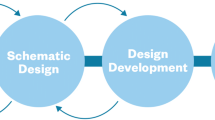Abstract
The construction industry is dynamic in nature due to increase in uncertainties in technology, budgets, and development processes. Claims and litigation are on a dramatic rise throughout the construction industry. If disputes are not resolved promptly, they tend to drag on and escalate and can cause project delays, lead to claims, require litigation proceedings for resolution, and ultimately destroy business relationships. The purpose of this study is to find out the magnitude of the identified six major construction conflicting factors and responsible parties for those problems. Out of six identified conflicting factors, this study has detected four major factors contributing construction conflict using AHP tool. These four major contributors are: ‘change of site condition’, ‘people interruptions’, ‘change order evaluation’, and ‘defective design’. The survey has also revealed the owner as a more responsible party for these conflicting factors and then followed by the consultant. The paper has suggested taking lead role by the owner to man age the conflicts in the construction sites and driving the project toward accomplishment by best planning. A construction conflict prevention model (CCPM) is suggested.
Similar content being viewed by others
References
Acharya, N.K., Lee, Y.D. and Kim, S.M. (2005). “Conflict avoidance in construction projects: Six “C” rescue factors.”Korean Journal of Construction Engineering and Management, KICEM, Vol. 6, No. 5, pp. 193–204.
Acharya, N.K., Lee, Y.D., and Kim, J.K. (2006). “Conflicting factors in Korean construction industry.”Korean Journal of Construction Engineering and Management, KICEM, Vol. 7, No. 2, pp. 171–180.
Atthirawong, W. and McCarthy, B. (2002). “An application of the analytical hierarchy process to international location decision-making.” URL address:http://www.ifm.eng.cam.ac.uk/cim/imnet/symposium2002/papers/Atthirawong.pdf (August 5, 2005).
Awakul, P. and Ogunlana, S.O. (2002). “The effect of attitudinal differences on interface conflicts in large scale construction projects: a case study.”Construction Management and Economics, Taylor and Francis, Vol. 20 No. 4, pp. 365–377.
Barrie, D.S. and Paulson, B.C. Jr. (1992).Professional Construction Management, 3rd Edition, McGraw-Hill, Inc.
Chan, A.P.C., Scott, D., and Chan, A.P.L. (2004). “Factors affecting the success of a construction project.”Journal of Construction Engineering and Management, ASCE, Vol. 130, No. 1, pp. 153–155.
Chan, E.H.W. and Suen, C.H. (2005). “Disputes and dispute resolution systems in Sino-foreign joint venture construction projects in China.”Journal of Professional Issues in Engineering Education and Practice, ASCE, Vol. 131, No. 2, pp. 141–148.
Cheung, S.O., Henry C.H.S., and Lam, T. (2002). “Fundamentals of alternative dispute resolution processes in construction.”Journal of Construction Engineering and Management, ASCE, Vol. 128, No. 5, pp. 409–417.
Chua, D.K.H., Kog, Y.C. and Loh, P.K. (1999). “Critical success factor for different project objectives.”Journal of Construction Engineering and Management, ASCE, Vol. 125, No. 3, pp. 142–150.
Epstein, R.C. (2004). “How construction contracts cause litigation.”Alert, Greenberg Traurig, USA, (February) URL address:http://www.gtlaw.com/pub/alerts/2004/epsteinr_02.pdf (July 4, 2005).
Fisk, E.R. (2000).Construction project administration, 6th Ed., Prentice Hall, USA.
Flink, M.R. (1998). “A better way to estimate and mitigate disruption.”Journal of Construction Engineering and Management, ASCE, Vol. 124, No. 6, pp. 490–497.
Fong, P.S.K. and Choi, S.K.Y. (2000). “Final contractor selection using the analytical hierarchy process.”Construction Management and Economics, Taylor and Francis, Vol. 18, pp. 547–557.
Harmon, K.M.J. (2003). “Resolution of construction disputes: A review of current methodologies.”Leadership and Management in Engineering, ASCE, Vol. 3, No. 4, pp. 187–201.
Kartam, N.A. and Kartam, S.A. (2001). “Risk and its management in the Kuwaiti construction industry: a contractors’ perspective.”International Journal of Project Management, Elsevier, Vol. 19, No. 6, pp.325–335.
Kim, Y.B. (2003). “To get what you want, push the government around.”The Korea Economic Daily, Vol. 29, No. 829.
Levy, S.M. (2000).Project Management in Construction, 3rd Ed. McGraw-Hill.
Long, N.D., Ogunlana, S., Quang, T., and Lam, K.C. (2004). “Large construction projects in developing countries: a case study from Vietnam.”International Journal of Project Management, Elsevier, Vol. 22, No. 7, pp. 553–561.
Miller, R. and Lessard, D. (2001). “Understanding and managing risks in a large engineering projects.”International Journal of Project Management, Elsevier, Vol. 19, No. 8, pp. 437–443.
O’Leary, A. (2002). “Doing our best to avoid claims time to sharpen up our practices.”DCD (Design Cost Data), Nov/Dec Issue, USA, URL:http://www.dcd.com/oleary/oleary_novdec_2002.htm
Rahman, M.M. and Kumaraswamy, M.M. (2004). “Contracting relationship trends and transitions.”Journal of Management in Engineering, ASCE, Vol. 20, No. 4, pp. 147–161.
Saaty, T.L. (1980).The Analytical Hierarchy Process. McGraw-Hill, New York.
Samantha, I. (2002). “An overview of construction claims: How they arise and how to avoid them.” URL address:www.cwilson.com,Clark Wilson, British Colombia, Canada (April 27, 2006).
Shen, Q., Lo, K.K., and Wang, Q. (1998). “Priority setting in maintenance management: a modified multi-attribute approach using analytical hierarchy process.”Construction Management and Economics, Taylor and Francis, Vol. 16, pp. 693–702.
Slater, T.S. (1998). “Feature: Partnering: Agreering to agree.”Journal of Management in Engineering, ASCE, Vol. 14, No. 6, pp. 48–50.
Zetlin, A. and Ojar, S. (2003). “The public: Key to successful projects.”Public roads, Vol. 67, No. 3, US Department of transportation, Federal highway administration. URL address:http://www.tfhrc.gov/pubrds/03nov/08.htmr (April 27, 2006)
Author information
Authors and Affiliations
Corresponding author
Rights and permissions
About this article
Cite this article
Acharya, N.K., Lee, Y.D. & Kim, J.K. Critical construction conflicting factors identification using analytical hierarchy process. KSCE J Civ Eng 10, 165–174 (2006). https://doi.org/10.1007/BF02824057
Received:
Accepted:
Issue Date:
DOI: https://doi.org/10.1007/BF02824057




